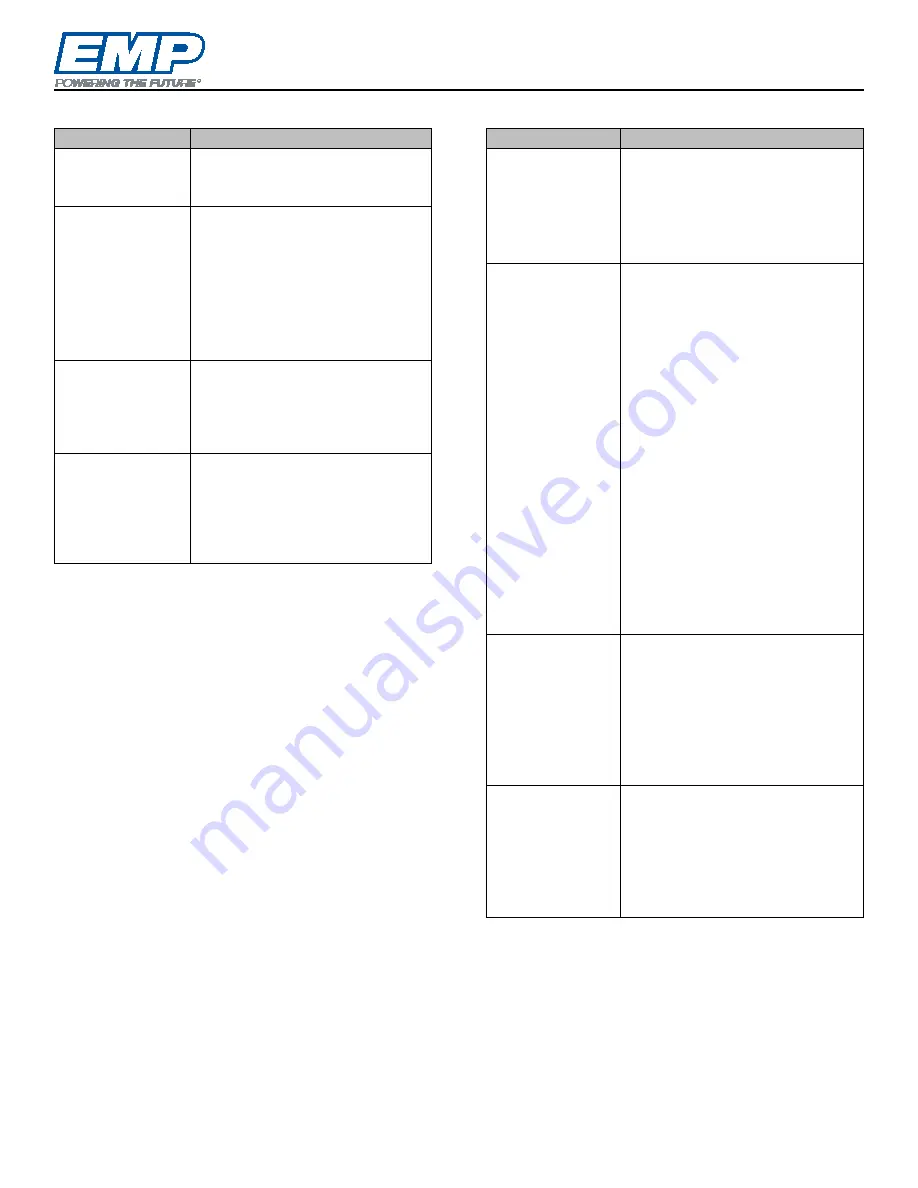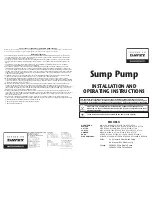
Routine Maintenance/Troubleshooting
© 2019 EMP, Inc.
16
Routine Maintenance
Frequency
Action
When
checking/filling
vehicle fluids
Ensure fluid levels are correct.
Every oil change
Inspect system for leaks.
If a leak is suspected, before
removing the pump, clean the
area to properly locate the leak
source.
Sample oil and check to ensure
oil meets recommended oil
cleanliness (ISO 20/18/15).
Every three
months or more
often if conditions
are harsh
Visually inspect exterior of pump
for evidence of leaks or damage.
Check wires for wear or frayed
insulation. Ensure all electrical
connections are tight.
Annually
Ensure plumping connections are
tightened to proper torque rating.
Ensure all wires and pin
connections are intact. Inspect
support structure for any damage
or loose hardware.
Troubleshooting
Symptom
Probable Cause
Pump will not run
•
Incorrect supply voltage.
•
Blown fuse.
•
Electrical connection issue.
•
Pumping gear seized with
debris.
•
Problem with ignition switch.
Pump not
running at
commanded
speed
•
This may be normal operation
due to the system design. An
application that has a high
downstream circuit flow
restriction and/or a low fluid
operating temp (increased
fluid viscosity) will result in a
pump reaching its electrical
current limit and will thus roll
back its speed to not exceed
this limit. This speed limitation
is a result of the motor
controller protecting the
electronics from a condition
where excessive heat may
build up in the controller. For
pumps on CAN, the controller
will always provide a status
reason why the motor is not
at commanded speed.
•
Using heavier weight oil.
Pump won’t
prime
•
Clogged suction
screen/strainer.
•
Inlet circuit leak.
•
Outlet circuit is blocked.
•
Low fluid level.
•
Incompatible fluid.
•
Worn or damaged pumping
gear.
Low flow rate
•
Clogged suction
screen/strainer.
•
Inlet circuit leak.
•
Incompatible fluid.
•
Worn or damaged pumping
gear.
•
Low supply voltage.
















































